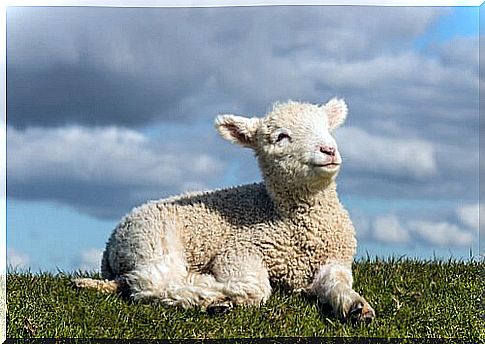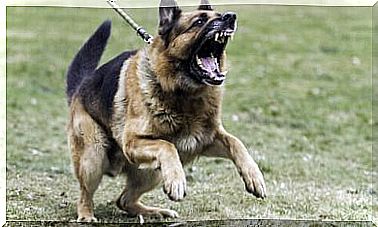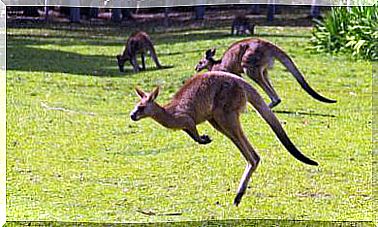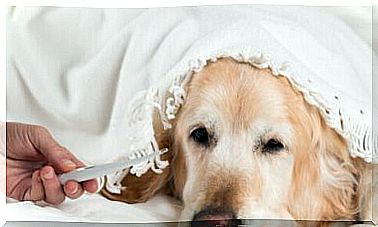Sheep Shearing: Details And Curiosities

Sheep shearing is essential for the exploitation of wool and to preserve the good health of these animals. Sheep farming must include a safe shearing process to preserve their welfare and optimize their productivity.
Physical characteristics and behavior of the sheep
With the term “sheep”, for centuries man has described a whole series of generically similar breeds, but which belong to a single species of mammal, called Ovis orientalis aries .
These ruminants possess a polygastric digestive system. This means that their stomach is made up of four cavities. Its most evident morphological characteristics are the robust body, covered by thick wool, supported by four muscular legs with hooves.
They are mammals of enormous agility and endurance, but their intelligence and sensitivity are also remarkable. They tend to have an energetic character and are very attentive to the stimuli of the surrounding environment.

Recent studies have shown the great memory capacity of sheep. The experiments verified that they could remember the events that happened two years earlier and the emotions they experienced during that time.
Sheep shearing: the best breeds for producing wool
Sheep farming, for the marketing of wool, is the most common. In addition, it guarantees the subsistence of many agricultural producers.
It is important to study the breeds of sheep before going into their breeding. Knowledge allows you to improve livestock management for all possible purposes. Furthermore, it is the best way to optimize investments by choosing the most suitable breed. Let’s see the types of sheep that exist today, based on expectations or production needs:
- Optimal breeds for wool production : merino and ramboullett .
- Bivalent breeds ( meat and wool ): corriedale , polypay , columbia and targee .
Wool: a very popular natural fiber
The wool that covers the body of the sheep is a type of natural fiber. Proper shearing of the sheep will allow a clean cut, without injuring the animal or wasting this very useful material.
Thanks to wool, a large number of different garments are produced : scarves, gloves, socks, sweaters, caps, mattresses, pillows, blankets and even very sophisticated coats. These clothes are highly valued for their ability to retain body heat while offering a feeling of softness and delicacy to the touch.

At the end of the shearing process, before these products reach the final consumer, it is right to remember that raw wool goes through a complex washing and sanitizing process, at the end of which it is used for weaving.
How to shear a sheep: tips and considerations
Sheep shearing requires specific care and proper planning. Below, we will show you some practical tips to help you organize your first clipping.
1- Choose the best time of the year
Shearing must be carried out once a year, to allow the sheep’s fur to recover without compromising the original quality of the wool.
The natural function of wool is to protect the animal from the cold and its subsistence outdoors. Therefore, the ideal is to shear the sheep during the spring or early summer.
2- Use the proper tools
The most traditional and ancient method involves the use of shears or shears. Currently it is preferred to use electric cutters, to speed up the cutting work and minimize the risk of wounds and injuries.
It is essential to have adequate tools for sheep shearing. A good electric shear consists of a handle, a comb and blades. The latter must be well sharpened to provide a good cut without injuring the animal.
3- Prepare the sheep for shearing
Before starting to shear, it is essential to gather the flock in an enclosure, in order to then be able to separate lambs, sheep and rams. It is also recommended not to feed the sheep the day before shearing.
Wool cannot be wet at the time of shearing. Therefore, you should never shear a wet sheep, or during rainy days.
It is also useful to take care of sheep’s wool throughout the year, to ensure its quality. A healthy sheep produces a large amount of lanolin , a fatty substance that protects the body and maintains the quality of the wool.
Eventually, due to age or health problems, the sheep may suffer from a deficiency in the production of lanolin . This makes the shears more difficult to cut and can compromise the brightness and thickness of the wool. There are commercial products to replace this protein and improve sheep health.
4- Contact professional clippers
As in any area of life, it is good to recognize your limitations. As you will understand well, shearing requires knowledge and experience such that, mainly, it serves to safeguard the well-being of the sheep and ensure the yield of the woolly fiber.
Therefore, it is important to seek the help of an experienced shearer so as not to make mistakes in sheep management. These professionals will be able to guide you and help you shear sheep, providing you with very important advice on the correct preparation of wool.









